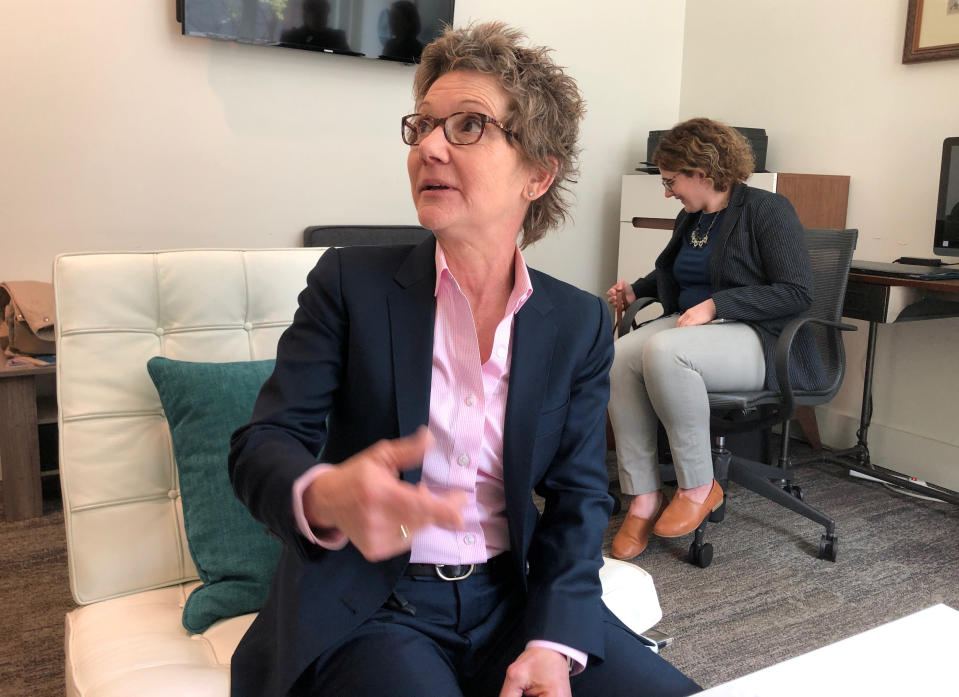America's economy needs to pull more workers into the labor force: Fed officials

In their first economic forecasts of 2020, Federal Reserve officials said that labor force participation is the key to U.S. economic growth. But those officials diverged on whether they expect more eligible workers to be pulled off of the sidelines and into jobs.
San Francisco Fed President Mary Daly and Dallas Fed President Robert Kaplan said Friday that policymakers need to be “humble” about whether they can improve the labor force participation rate (a measure of the total number of workers divided by the total civilian-age working population).
Despite the fact that unemployment has steadily fallen to record lows, the U.S. labor force participation rate has hovered around 63% with little improvement over the last half-decade.

At an economics conference in San Diego on Friday, both Fed officials said they were already happy to keep the labor force participation rate from declining. Amid an aging population, automation, and globalization, some policymakers may have expected more workers trapped on the sidelines.
“It’s been an enormous accomplishment to keep it flat for the last few years,” Kaplan said, predicting that the rate would fall to 61% over the next 10 years. Kaplan is a voting member of this year’s policy-setting Federal Open Market Committee.
But minutes from the FOMC’s last meeting in December show that not all Fed officials are on the same page.
“A number of participants noted that the labor force participation rate could rise further still,” read the minutes, released Friday afternoon.
Labor force participation may be the key to feeding a hungry labor market, which is experiencing a historically low 3.5% unemployment rate. But that headline number does not include workers who have stopped looking for a job because they lack the skills for available work.
Fed Chairman Jerome Powell says that communities that have suffered from the highest levels of unemployment underscore the need for the central bank to pay attention to labor force participation.
“I think that the fact that these communities have such high levels of unemployment and low levels of labor force participation tells you that there is slack out there,” Powell said Dec. 11.
Keys to growth
Speaking in Maryland on Friday, Richmond Fed President Thomas Barkin said he expects GDP growth to slow to 2% and said the only way to get faster growth is from improved productivity or labor force participation.
But Fed officials say improving labor force participation is a job for Congress, not the central bank. Initiatives on job retraining, for example, could better match workers with new work, but the Fed does not have the authority to launch such programs.
“Those are ultimately the fiscal authorities’ purview and they have the levers for that,” Daly said Friday in San Diego.
One bright spot for the labor force has been participation among prime-aged workers (between 25 and 54), which has risen steadily over the last half-decade.

A good chunk of this growth is likely coming from immigration.
Kaplan has previously pointed out that more than 50% of workforce growth over the past two decades came from immigrants and their children, which could make up for slowing workforce growth amid an aging population.
As the Fed tries to steer clear of a recession in 2020, the key to extending the longest economic expansion in U.S. history could be in the hands of fiscal policymakers.
For its part, the Fed has telegraphed that it would not tighten policy in 2020. The Fed’s next policy-setting meeting will take place January 28-29.
Note: This story originally stated that Kaplan saw the labor force participation rate falling to 61% over the next couple of years. The story was amended on Jan. 5 to correct that the Dallas Fed expects it to fall to 61% over the next 10 years.
Brian Cheung is a reporter covering the banking industry and the intersection of finance and policy for Yahoo Finance. You can follow him on Twitter @bcheungz.
Fed holds steady on rates, may continue to hold through 2020
Fed in focus as worries mount over a year-end repo market flare-up
‘The weirdest place in the world’: What the Fed missed in Jackson Hole
Read the latest financial and business news from Yahoo Finance
Follow Yahoo Finance on Twitter, Facebook, Instagram, Flipboard, SmartNews, LinkedIn, YouTube, and reddit.
